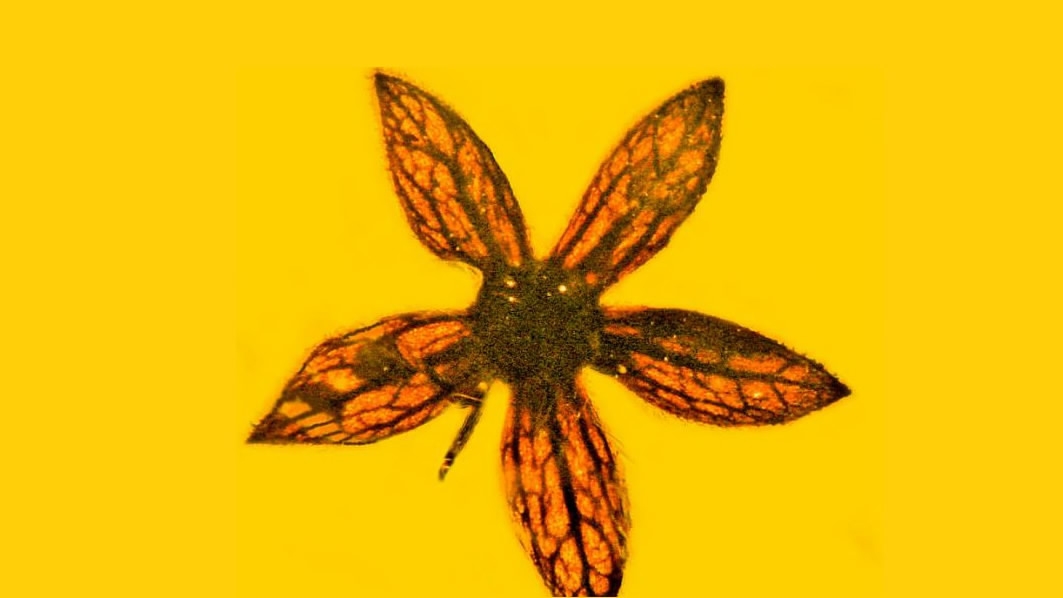
Tech & Sci
19:37, 16-Aug-2017
Researchers identify seven new 100 mln-year-old flower specimens

Seven intact flowers, all 100 million years old, have been found in their fossilized form by two researchers.
George Poinar Jr., professor emeritus in the Oregon State University (OSU) College of Science, and collaborator Kenton Chambers, professor emeritus in OSU College of Agricultural Sciences, identified the flowers as from a new species of tree.
Reporting their findings in a paper published in scientific journal Paleodiversity, they named the discovery Tropidogyne pentaptera based on the flowers' five firm, spreading sepals, as the Greek word for five is "penta" and "pteron" means wing.
The flowers range from 3.4 to 5 millimeters in diameter, necessitating study under a microscope.

The flowers range from 3.4 to 5 millimeters in diameter and have five firm, spreading sepals. /oregonstate.edu
The flowers range from 3.4 to 5 millimeters in diameter and have five firm, spreading sepals. /oregonstate.edu
While the flowers were preserved well in Burmese amber, Poinar said T. pentaptera was probably a rainforest tree.
"In their general shape and venation pattern, the fossil flowers closely resemble those of the genus Ceratopetalum that occur in Australia and Papua-New Guinea," he was quoted as saying in a news release from OSU on Tuesday.
About the relationship between a mid-Cretaceous Tropidogyne from Myanmar, formerly known as Burma, and an extant Ceratopetalum from Australia, more than 4,000 miles (6,400 km) and an ocean away to the southeast, Poinar believes there is an explanation in the geological history of the regions.
"Probably the amber site in Myanmar was part of Greater India that separated from the southern hemisphere, the supercontinent Gondwanaland, and drifted to southern Asia," he said. "Malaysia, including Burma, was formed during the Paleozoic and Mesozoic eras by subduction of terranes that successfully separated and then moved northward by continental drift."
Source(s): Xinhua News Agency

SITEMAP
Copyright © 2018 CGTN. Beijing ICP prepared NO.16065310-3
Copyright © 2018 CGTN. Beijing ICP prepared NO.16065310-3